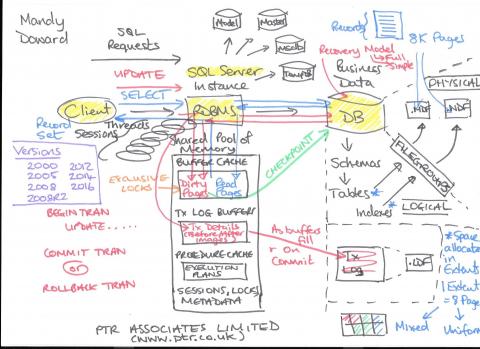How Draft1 Simplifies Complex Diagrams for Tech Teams
In the fast-paced world of technology, clear communication is key. For tech teams, the ability to convey complex ideas, systems, and processes through diagrams is essential. However, creating these diagrams can often be a time-consuming and intricate task. That’s where Draft1 comes in—transforming the way tech teams approach diagramming by making the process simpler, faster, and more effective.
Why Diagrams Matter in Tech
Diagrams are more than just visuals—they're powerful tools that help teams understand complex architectures, workflows, and data flows. Whether it’s a system architecture diagram, a network map, or a workflow chart, the ability to visualize concepts quickly and clearly can make a significant difference in team productivity and communication.
However, creating these diagrams has traditionally been a labor-intensive process, often requiring specialized software or design skills. Draft1 changes that by offering an intuitive, user-friendly platform that simplifies even the most complex diagramming tasks.
How Draft1 Simplifies the Process
- User-Friendly Interface:Draft1's interface is designed with the user in mind. Tech teams don’t need to spend hours learning how to use the tool—its intuitive layout and easy-to-navigate features mean that users can start creating diagrams right away, without any steep learning curve.
- Automated Diagram Generation:One of the standout features of Draft1 is its ability to automatically generate diagrams from textual descriptions. Simply input the key components and relationships, and Draft1 will generate a professional-looking diagram in seconds. This is particularly useful for tech teams who need to quickly visualize complex systems without getting bogged down in the details.
- Customization and Flexibility:While Draft1 automates much of the diagram creation process, it also offers extensive customization options. Users can tweak layouts, colors, labels, and more to ensure that the final diagram meets their exact needs. This balance between automation and customization is what makes Draft1 so powerful for tech teams.
- Collaboration Features:Draft1 also supports collaboration, allowing multiple team members to work on a diagram simultaneously. This feature is invaluable for tech teams spread across different locations or working remotely, as it ensures that everyone is on the same page and can contribute to the final diagram.
- Integration with Existing Tools:Tech teams often use a variety of tools in their workflows, from project management software to version control systems. Draft1 integrates seamlessly with these tools, allowing teams to incorporate diagrams directly into their existing processes without any disruption.
Real-World Applications
Tech teams across various industries have already started leveraging Draft1 to simplify their diagramming processes. For instance, software development teams use Draft1 to create system architecture diagrams that help developers understand how different components interact. Network engineers rely on it to map out complex networks, ensuring that every device and connection is accounted for. Data scientists use Draft1 to visualize data flows and processing pipelines, making it easier to communicate their work to non-technical stakeholders.
Conclusion
Draft1 is more than just a diagramming tool—it’s a game-changer for tech teams who need to simplify complex diagrams quickly and effectively. By automating much of the process while still allowing for extensive customization, Draft1 enables teams to focus on what really matters: understanding and solving complex technical challenges.
If your tech team is looking for a way to streamline its diagramming process, Draft1 might be the perfect solution. Give it a try and see how it can transform the way you visualize complex systems and processes.
